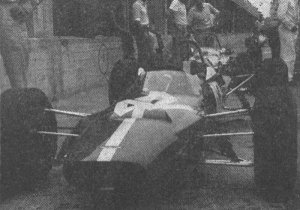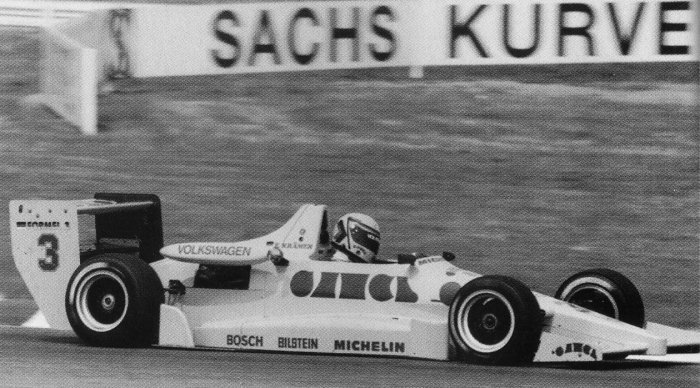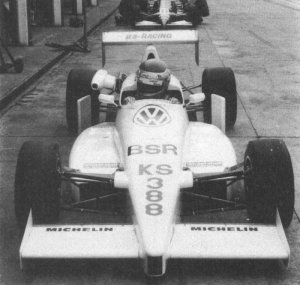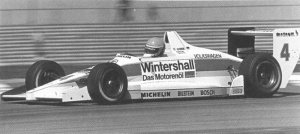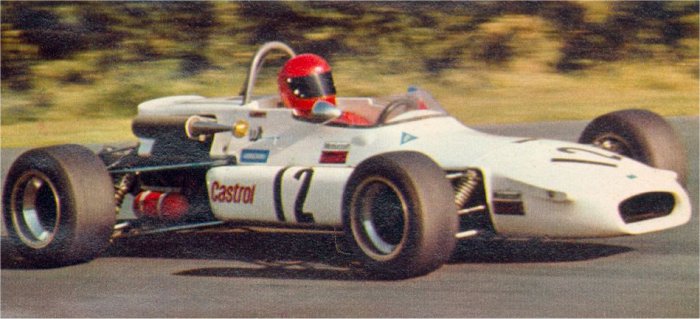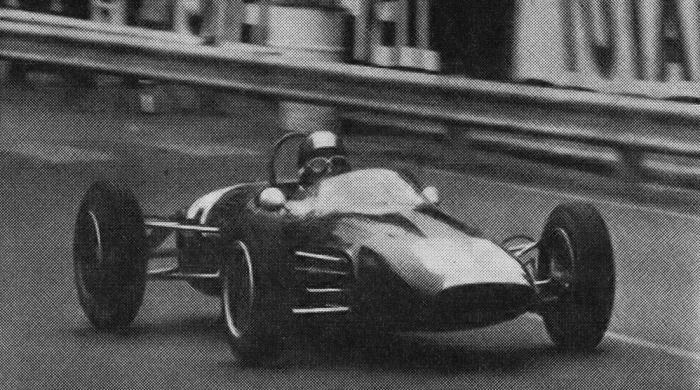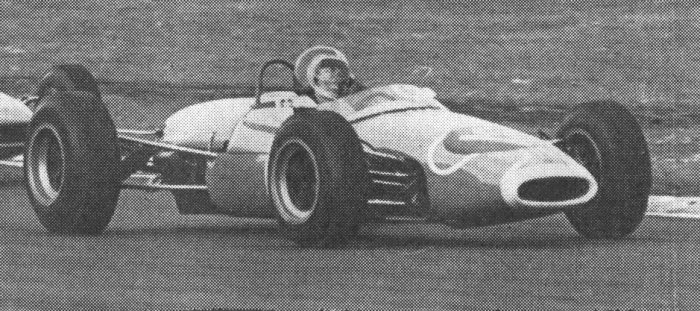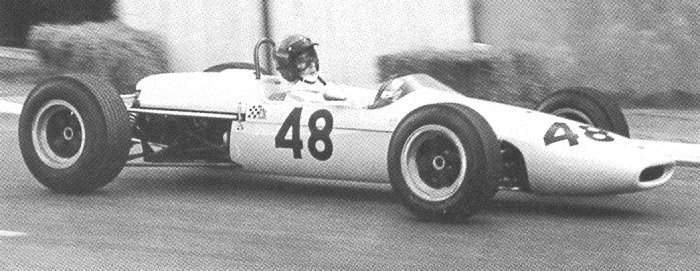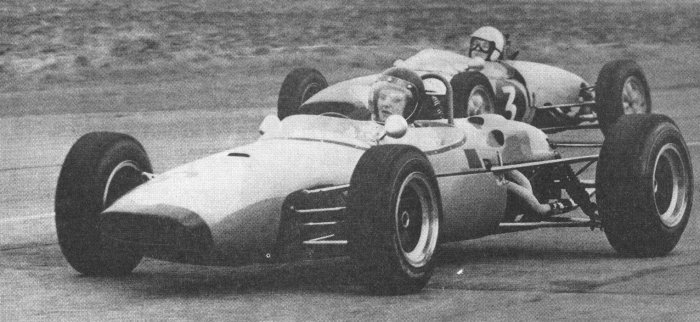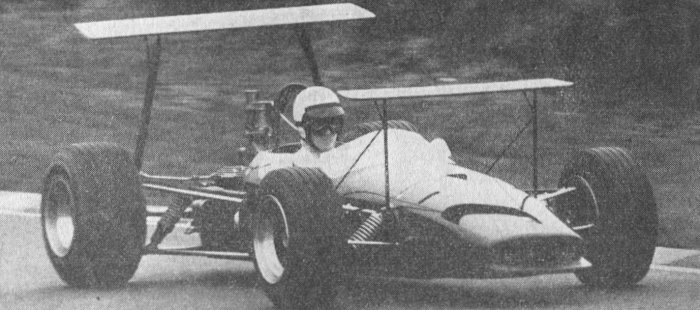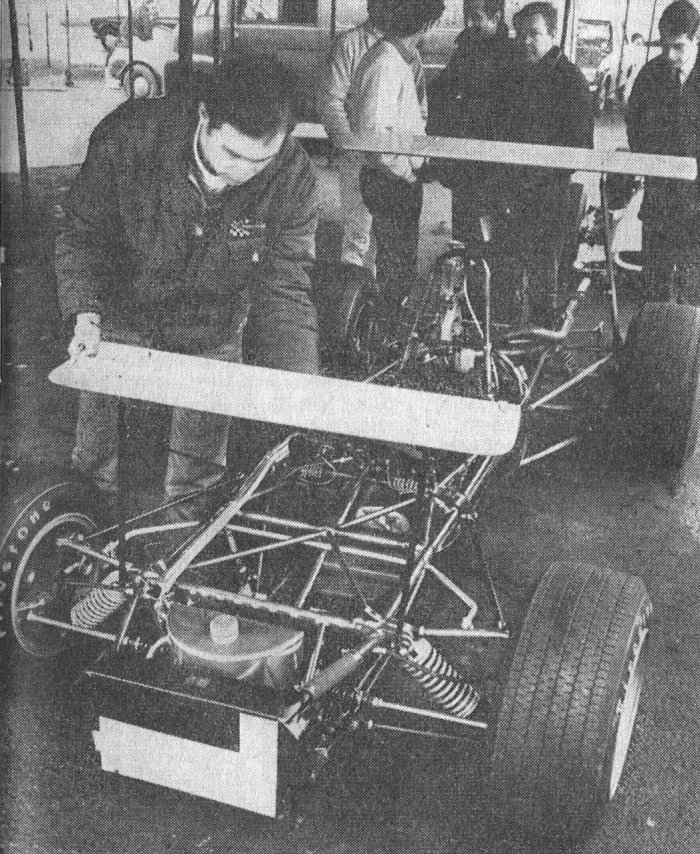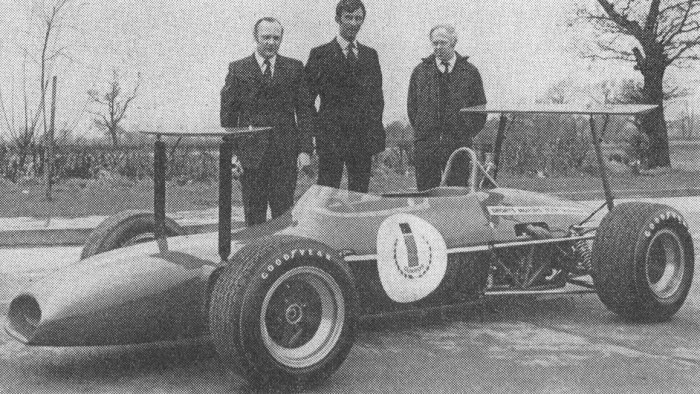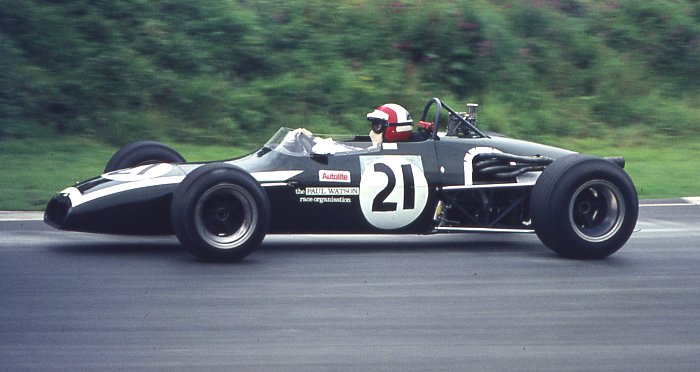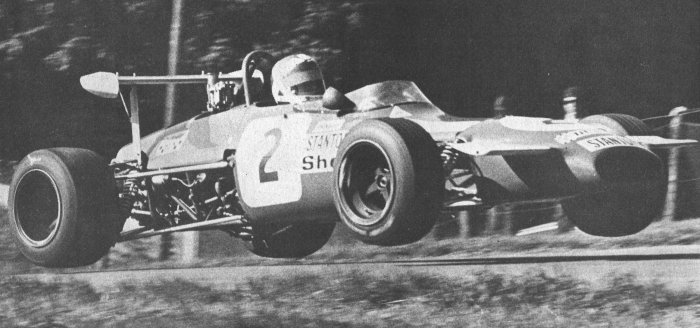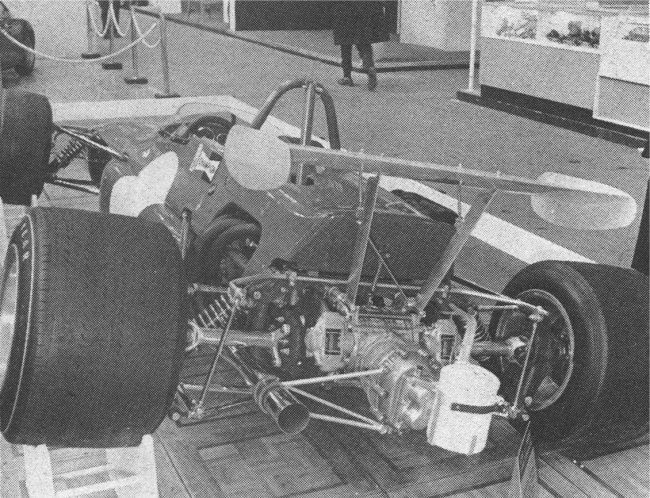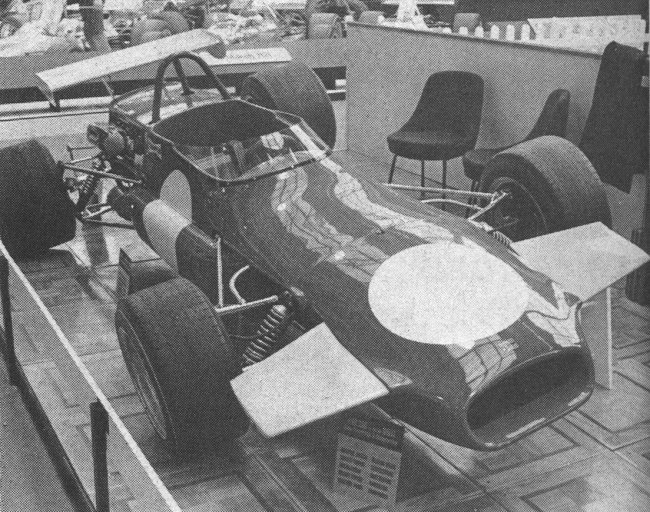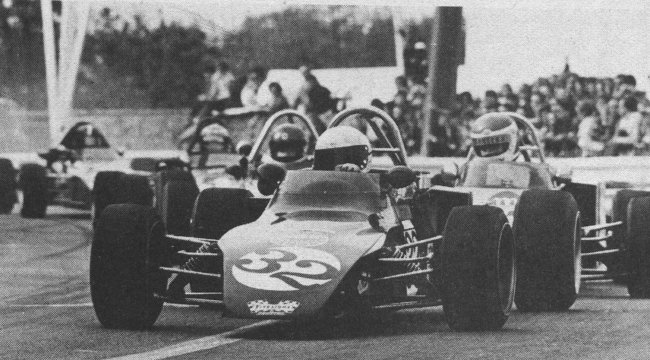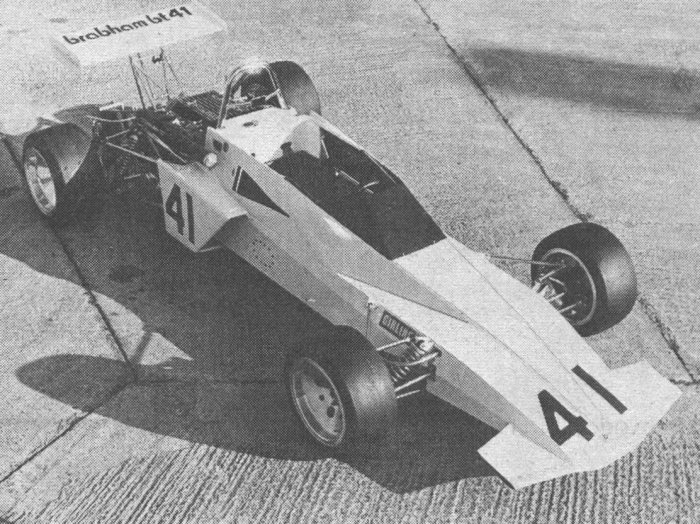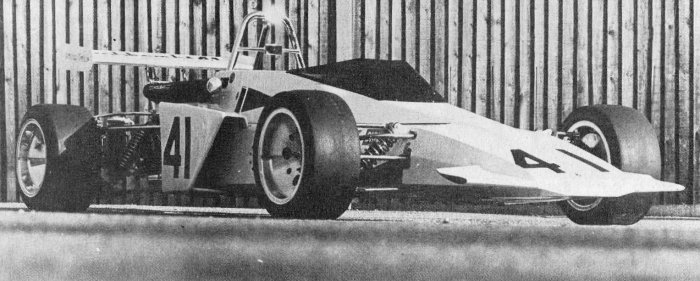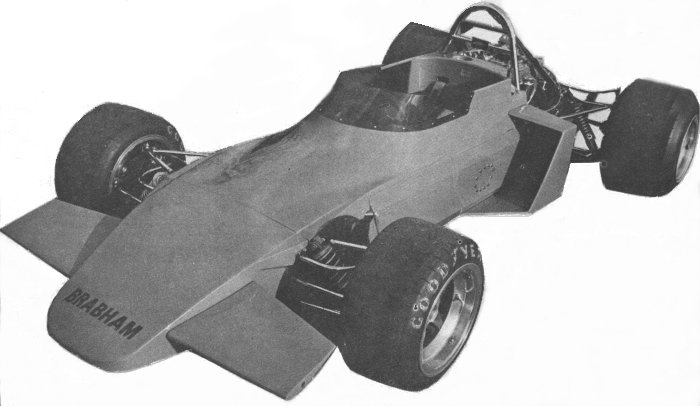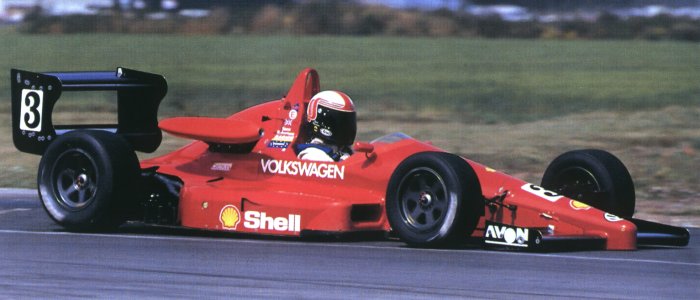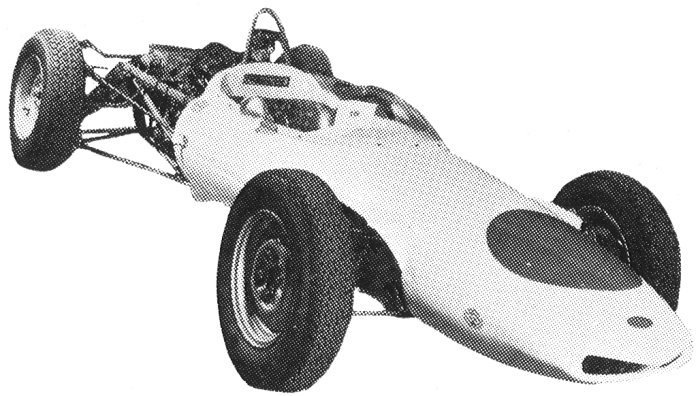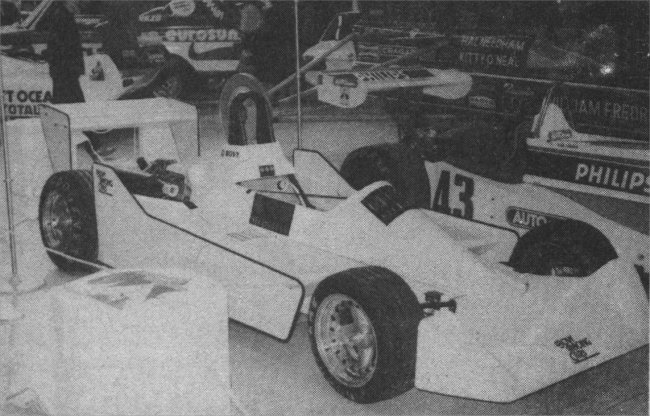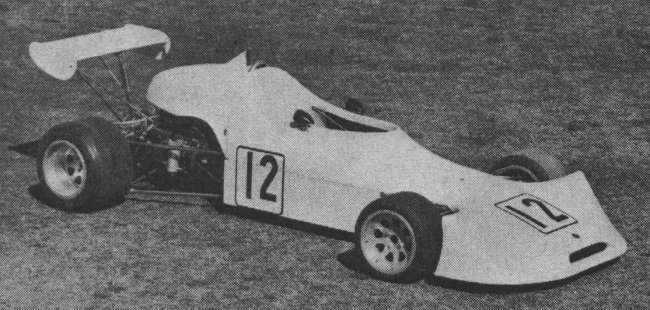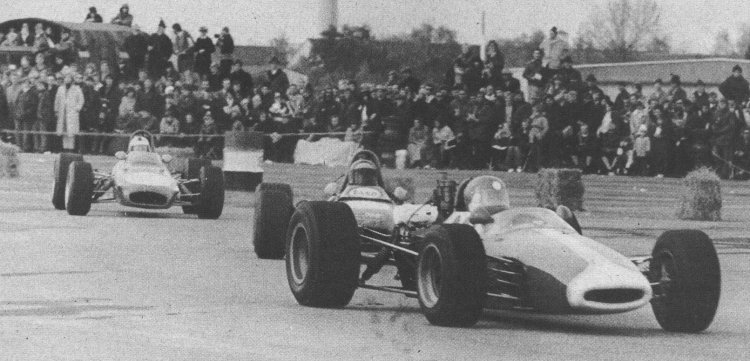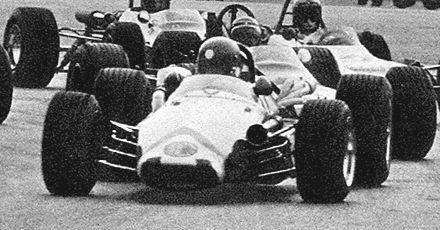1964
BT10
Frank Gardner.
BT9
Derek Bennett, Jean Blanc, Rodney Bloor, John Cardwell, Adrian Chambers, Piers Courage, Patrick Dal Bo, Hans-Peter Dechent, Hermann Domer, Walter Habbeger, Manfred Möhr, Bill Morgans, Picko Troberg, Frank Williams.
BT6
Clive Baker, Roger Mac, Silvio Moser, Denis O’Sullivan, John Peterson.
BT2
Michel Finquel, Eddie Fletcher.
?
Leo Matilla, David Prophet.
1965
BT16
Kurt Ahrens jnr., Trevor Blokdyk, Martin Davies, Bruno Deserti, Carlo Facetti, Tommy Hitchcock, Chris Irwin, Roger Mac, Denis O’Sullivan, Roy Pike, Alan Rollinson, Harry Stiller.
BT15
Andrea de Adamich, Bernhard Bauer, John Cardwell, David Cole, Patrick Dal Bo, Tony Dean, Jürg Dubler, Jörgen Ellekaer, Andrew Fletcher, Jean-Claude Franck, Martin Gill, Natalie Goodwin, Walter Habegger, Egert Haglund, Cliff Haworth, Tony Horsley, Tony Huggett, Chris Lambert, Jens-Christian Legarth, Manfred Möhr, Clay Regazzoni, Johnny Servoz-Gavin, Martin Slater, Rob Slotemaker, Harry Stiller, Jim Sullivan, Ulf Svensson, Sverrir Thoroddsson, Picko Troberg, Graham White.
BT10
Mike Beckwith, Piers Courage, Charles Crichton-Stuart, Martin Davies, Carlo Facetti, Peter Gethin, Jens-Christian Legarth, Charles Lucas, Denis O’Sullivan, John Peterson, Jonathan Williams.
BT9
Adrian Chambers, Hans-Peter Dechent, Tony Horsley, Dieter Mantzel, Manfred Möhr, Leif Persson, David Rees, Jean Sage, Martin Stefani, Keith St. John.
BT6
Guigliemo Bellasi, Hubert Discomps, Roger Laurent, Lars Lindberg, John Miles, Silvio Moser, Andrea Tosi.
?
Bengt Bergholm, Dieter Bohnhorst, Ernesto Brambilla, René Caumont, Georg Duneborn, Willy Franz, Sven Fürstenhoff, Fred Goeske, Frank Williams, Per-Olov Zetterström.
1966
BT21
Derek Bell.
BT18
Andrea de Adamich, Kurt Ahrens jnr., Clive Baker, Ken Bass, Mike Beckwith, Trevor Blokdyk, Bob Bondurant, Derek Booton, Roger Brash, Graham Coaker, David Cole, Charles Crichton-Stuart, Tony Dean, Wal Donnelly, Jürg Dubler, John Fenning, Rollo Fielding, Peter Gethin, Mike Gill, Natalie Goodwin, Erik Hazelhoff, Tommy Hitchcock, Tetsu Ikuzawa, Chris Irwin, Fritz Kallenberger, Mike Knight, Tony Lanfranchi, Lars Lindberg, Roger Mac, Steve Matchett, Fred McLean, Silvio Moser, Jackie Oliver, Ronnie Peterson, Alec Poole, Alan Rollinson, Tim Schenken, Len Selby, Richard Smith, Harry Stiller, Keith St. John, Jim Sullivan, Picko Troberg, Ole Vejlund, Mike Walker, Robin Widdows, Chris Williams, Frank Williams, Jonathan Williams.
BT16
Mike Barnett, Trevor Blokdyk, Dieter Bohnhorst, Ernesto Brambilla, Ken Costello, Carlo Facetti, John Hartle, Cliff Haworth, Chris Irwin, Lewis Kerr, Robs Lamplough, Lars Lindberg, Roger Mac, Silvio Moser, Brian Newton, Filippe Nogueria, Antonio Peixinho, George Pitt, Clay Regazzoni, Harry Stiller, Jim Sullivan, Tony Trimmer, David Walker, Dave Williamson.
BT15
Andrea de Adamich, Ray Allen, Patrick Allfrey, Giancarlo Baghetti, Bernard Baur, Dieter Bentz, Ernesto Brambilla, Johnny Calvert, John Cardwell, Roger Challoy, Graham Coaker, Ken Costello, Chris Craft, Jorge Cupiero, Paul Deetens, Michel Delacave, Liane Engeman, Andrew Fletcher, Sven Fürstenhoff, Pierre-Yves Gaggio, Cliff Haworth, Jens Heggov, Mike Keens, Chris Lambert, Tony Lanfranchi, Gijs van Lennep, Mike Loasby, Steve Matchett, Charles “Chuck” McCarty, John Millar, Manfred Möhr, Chris Moore, David Morgan, Brian Newton, Filippe Nogueria, George Pairetti, John Patterson, John Peterson, Teddy Pilette, John Ralph, Clay Regazzoni, Rolf Scheel, Martin Slater, Martin Stephani, Keith St. John, Ulf Svensson, Sverrir Thoroddson, Picko Troberg, Alex Trotter, Andreas Vianini, Mike Walker, Alistair Welch, Per-Olaf Zetterström.
BT14
Graham Coaker, Philippe Vidal.
BT10
Andrea de Adamich, Ray Calcutt, Charles Crichton-Stuart, Robin Darlington, Martin Davies, Carlo Facetti, Oscar ‘Cacho’ Fangio, Chris Jackson, Mike Keens, Mike Knight, Robert Lamplough, Tico Martini, Geoff Oliver, Jonathan Williams.
BT9
Ray Calcutt, Syd Fox, John Hartle, Dan Hawkes, David Rees, John Tomlinson, Tony Trimmer.
BT6
Bengt Berghom, Norman Foulds, Graham White.
?
Franco Bernabei, Lars Bjühr, Juan-Manual Bordeu, Roger Brash, Nasif Estefano, Tim Featherstonehaugh, Rene Fiesler, Kurt Gåre, Francesco Ghezzi, Andrew Huggett, Chris Jackson, Jean Johansson, Henry (Henrico) Jorger, Lewis Kerr, “Kurt”, Eddy Levin, Marco Macciantelli, Dino Margina, Luigi Malanca, Corrado Manfredini, Sven Mattson, Estefano Nasif, Luigi Petri, Jean Christian Petriacq, Jaime Piera, Vincente Sergio, Alfredo Simoni, Hans Sjosted, A. Tosi, Dieter Wipperfürth, Geddes Yeates.
1967
BT21B
Mike Keens, Dave Williamson.
BT21
Kurt Ahrens jnr., Mike Beckwith, Derek Bell, Bengt Bergholm, Dave Berry, Mike Beuttler, Bev Bond, Richard Burton, John Cardwell, Carlos Gaspar, Jean-Pierre Cassegrain, Brian Classick, Piers Courage, Charles Crichton-Stuart, Ken Crook, Prince Adam Czartoryski, Mac Daghorn, Jürg Dubler, Jörgen Ellekaer, Lars Elgén, Liane Engemann, Peter Fattorini, Rollo Fielding, Norman Foulds, Alain Franceschi, Howden Ganley, Carlos Gasper, Peter Gaydon, Peter Gethin, Natalie Goodwin, “Guido”, Jan Heggov, Philippe de Henning, Tommy Hitchcock, Tetsu Ikuzawa, Chris Jackson, Mike Keens, John Kendall, Leo Kinnunen, Mike Knight, Richard Knight, Robert Lamplough, Tony Lanfranchi, Gijs van Lennep, Curt Lincoln, Lars Lindberg, Charles Lucas, Corrado Manfredini, Tico Martini, Maurizio Montagnani, Silvio Moser, Morris Nunn, Ingvar Pettersson, Roy Pike, Comte Adam Potocki, Dave Rees, Doug Revson, Alan Rollinson, Malcolm Smith, Harry Stiller, Ulf Svensson, Andrea Vianini, Jouko Valli, Ole Vejlund, Mike Walker, Peter Westbury, Mervin Wingfield, Chris Williams, Roger Woodward.
BT18
Claude Ballot-Léna, Bernhard Baur, Mike Beckwith, Giugielmo Bellasi, Dave Berry, Trevor Blokdyk, Dieter Bohnhorst, John Campbell, George Cayley, Patrick Champin, Graham Coaker, David Cole, Eduardo Copello, Ken Crook, John Davies, Wal Donnelly, Jürg Dubler, Nasif Estefano, Beat Fehr, Pierre-Yves Gaggio, Howden Ganley, Peter Gaydon, Natalie Goodwin, Tony Goodwin, Egert Haglund, David Hobbs, Tetsu Ikuzawa, Jean-Pierre Jabouille, Curt-Rune Johansson, Henry Jorger, Fritz Kallenberger, Harry King, Leo Kinnunen, Matti Lamminen, Robert Lamplough, Tony Lanfranchi, Carlos Marincovich, Rafael Marsans, Carlos Martin, Steve Matchett, Charles (Chuck) McCarty, Chris Meek, Ben Moore, Silvio Moser, Fillippe Nogueira, Joaquim Nogueira, Carlos Pairetti, Louis Parsons, John Patterson, Ronnie Peterson, Jaime Piera, George Pitt, Dave Rees, Alan Rollinson, Pierre Ryser, Richard Shardlow, Tim Schenken, Harry Stiller, Ulf Svensson, John Tomlinson, Alistair Walker, Mike Walker, Reine Wisell, David Williamson.
BT16
Ernesto Brambilla, Jean-Pierre Cornet, Jacques Crozier, Paul Deetens, Christophe Drier, Hans-Jürgen Duchene, Carlo Facetti, Cliff Haworth, Marcel Hollebeck, Michel Hollebecq, Tony Huggett, Jean Johansson, Eric de Keyn, René Ligonnet, Manfred Möhr, Silvio Moser, Brian Newton, Raimo Rinne, Hans Sjöstedt, Jean Sulpice, David Williamson.
BT15/18
Patrick Allfrey, Steve Matchett.
BT15
Patrick Allfrey, Bernard Baur, Dieter Bentz, Lars Bjühr, Max Bonnin, Juan-Manual Bordeu, John Campbell, Patrick Champin, David Conning, Jean-Pierre Cornet, Ken Costello, Alan Daykin, Jürg Dubler, Norman Foulds, Kai Godenhjelm, Franz Graf, Jean Johansson, Jean-Claude Lhoro, Greg Lilley, Ross MacGillivray, Barrie Maskell, Charles McCarty, John Millar, Manfred Möhr, Brian Newton, Geoff Oliver, John Ralph, Clay Regazzoni, Fritz Riesen, Rolf Scheel, Kurt Seerup, Martin Slater, Malcolm Smith, Martin Stephani, Ulf Svensson, Len Ward, Mike Watkins.
BT10
Andrea de Adamich, David Morgan, Geoff Oliver, Louis Parsons, John Patterson, Alex Trotter.
BT9
Börje Björkqvist, Norman Foulds, Alan Minshaw.
?
Jean Belin, Bengt Bergholm (chassis listed as Brabham Special), David Bridges, Ken Crook, “Guido”, Mike Herbertson, Kjell Jansson, Curth-Rune Johansson, Henry Jorger, Bob King, Stefano Monti, Rosario Nicoletti, Henri Pastrie, Brian Peake, Adam Potocki, Frank Ruata, Saverio Salerno, Andrea Saltari, Giuseppe Simini.
1968
BT21B
Bernhard Baur, Bev Bond, Richard Burton, Jean-Pierre Cassegrain, Patrick Champin, Jürg Dubler, John Epton, Peter Gethin, Jean-François Gerbault, Francesco Ghezzi, Carlos Giro, Malcolm Guthrie, Tetsu Ikuzawa, José-Maria Juncadella, Mike Keens, Rene Ligonnet, Curt Lincoln, Gunnar Martinsson, Wayne Mitchell, Ove Nicklasson, Per-Jonas Qvarnström, Giuseppe Simini, Harry Stiller, Bill Stone, UIf Svensson, Philip Tose, Alex Trotter, Peter Westbury, Dave Williamson.
BT21
Prince Jorge de Bagration, Bernhard Baur, Mike Beckwith, Kaj Berglund, Mike Beuttler, Lars Bjuhr, Bev Bond, Richard Burton, Jean-Pierre Cassegrain, Peter Ditzler, Wal Donnelly, Jürg Dubler, Hans-Jurgen Duchene, Jean-Paul Elena, Jörgen Ellekaer, Jean-Pierre Ellena, Juan Fernandez, Alain Franchesi, Pierre-Yves Gaggio, Howden Ganley, Carlos Gaspar, Francesco Ghezzi, Natalie Goodwin, Bill Gowdy, Rosario Grasso, Rolf Gröndahl, “Guido”, Malcolm Guthrie, Egert Haglund, Peter Hanson, Eddie Jacobsson, Jean Johansson, Ulf Karlsson, Peter Korda, Kinny Lall, Matti Lamminen, Tony Lanfranchi, Gijs van Lennep, Curt Lincoln, Lars Lindberg, Gunnar Martinsson, Chuck McCarty, John Miles, Manfred Möhr, Maurizio Montagnani, “Pelé”, Jan Persson, Ingvar Pettersson, Davy Powell, Jonas Qvarnström, Roland Salomon, Georges Schäfer, Giuseppe Simini, Karl Starke, Harry Stiller, Bill Stone, Ulf Svensson, Rolf Tellsten, Ole Vejlund, Philippe Vidal.
BT18/21B
Bill Stone.
BT18
Gustaf Dieden, Wal Donnelly, Fritz Kallenberger, Jean Johansson, Charles McCarty, Hans Nilsson, Georges Schäfer, Bill Stone.
BT16
René-Pierre Alié, Paul Deetens, Jacques Demoulin, Hans-Jürgen Duchene, Jörgen Ellekaer, Giancarlo Gagliardi, Manfred Möhr, Hans Sjöstedt.
BT15
René-Pierre Alié, Rudolfo Bay, Ole B. Damm, Karl Starke, Jean-Bernard Sulpice, Rodolfo Bay Wright.
BT10
“El Abulense”, Giorgio Pianta.
?
Helmut Adams, Börje Björqvist, Lars Bjuhr, Ulf Boman, Brüdes, M. Carbajo, Ernst Degner, Bo Ericsson, Juan Fernandez, Arthur Frischknecht, Daniel Gache, Rosario Grasso, Jean Johansson, Gunnar Martinsson, Massimo Natili, Hans Nilsson, “Pelé”, Giorgio Pianta, Gianluigi Picchi, Raimo Rinne, Diego Ritucci, Saverio Salerno, Andrea Saltari, Georges Schäfer, Félix Serra, Karl Starke.
1969
BT28
Mike Beuttler, Bev Bond, Jean-Pierre Cassegrain, Ernst Degner, Gustav Dieden, Alan Harvey, Keith Jupp, John Kendall, Wayne Mitchell, Ingvar Petersson, Tim Schenken, Ulf Svensson, Sverrir Thoroddsson.
BT23
Claudio Francisci.
BT21B
Bev Bond, Mats Bystrom, Humphrey Corbett, Jürg Dubler, Norman Foulds, Natalie Goodwin, Rolf Gröndahl, Bert Hawthorne, Eddie Jacobson, Roger Keele, Gregor Krönegard, Brendan McInerney, Torsten Palm, Luigi Petri, Per-Jonas Qvarnström, Alan Rollinson, Rolf Tellsten, Cyd Williams.
BT21
Mike Beckwith, David Cole, Willi Deutsch, Bo Ericsson, Walter Flückiger, Pierre-Yves Gaggio, Bill Gowdy, Rolf Gröndahl, Andreas Hängärtner, Keith Holland, James Hunt, Jean Johansson, Eddie Jacobsson, Wayne Mitchell, Gunnar Martinson, Jean-Bernard Mermod, Wayne Mitchell, Jan-Olaf Persson, Siegfried Schrieder, Richard Scott, Ole Vejlund, Jorg Zabrowski.
BT18
Peter Deal, Rainer Kaese, Ed Reeves, Rene Scailet, Gerald Storrer.
BT16
Giancarlo Gagliardi.
BT15
Karl Starke.
?
Harald Kämpf, Luigi Petri.

